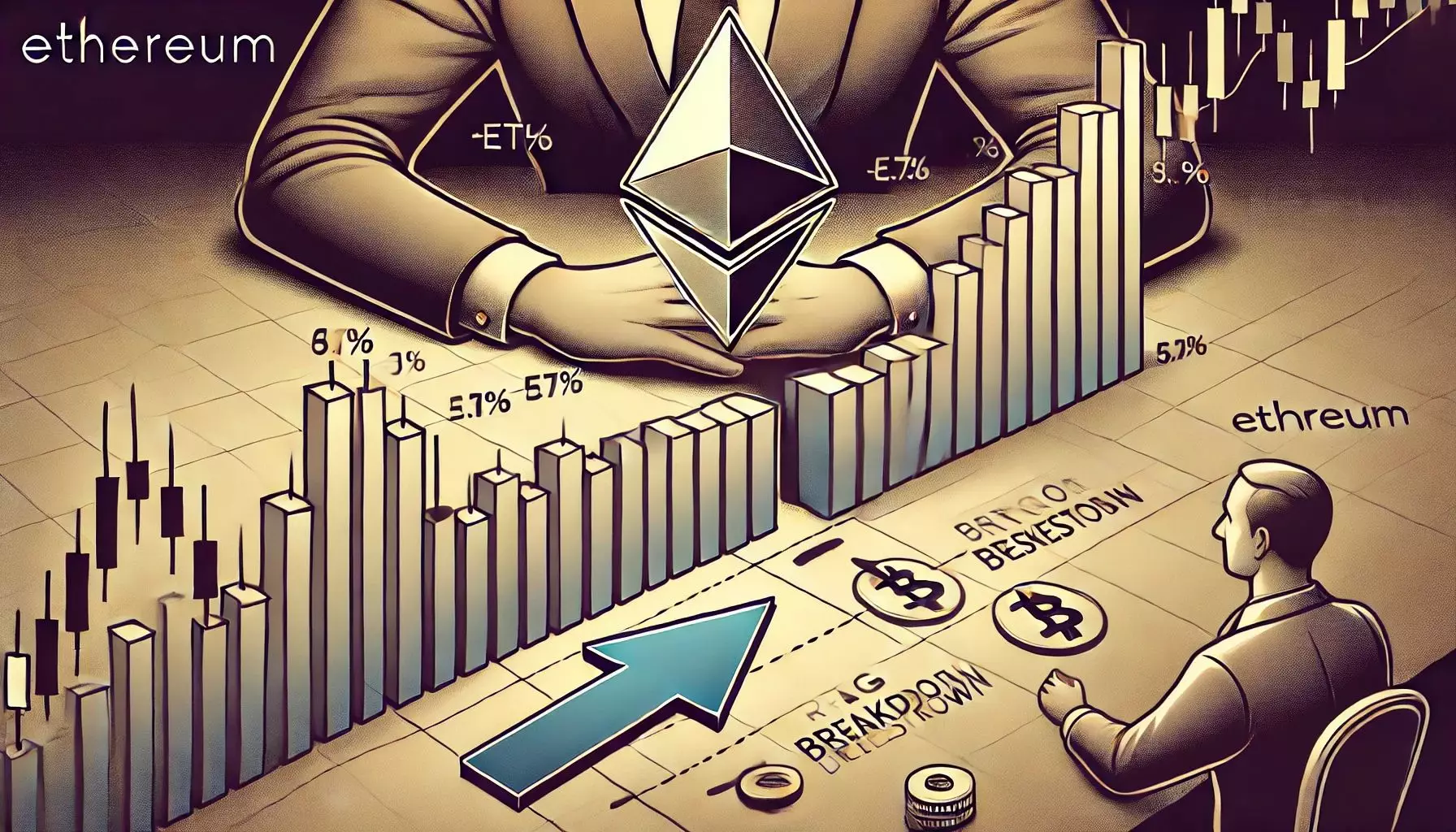Ethereum, often hailed as the backbone of decentralized finance (DeFi) and non-fungible tokens (NFTs), is currently trapped in a cycle of stagnation and uncertainty. The cryptocurrency market is undoubtedly in a state of flux. With Ethereum’s price hovering perilously close to the $1,580 mark after a distressing downturn from the critical $2,000 threshold, the sentiment among traders has become increasingly wary. This isn’t just another dip; it reflects a significant indecision fueled by broader macroeconomic concerns and internal dynamics within the crypto space.
The reality is that Ethereum’s price is compressing, indicating a lack of decisive movement from either buyers or sellers. Analysts and enthusiasts alike are holding their breath, waiting for a potential breakout. But this situation raises an unsettling question: can Ethereum shake off the shackles of its current inertia, or is it destined for further declines? The volatility is palpable, and the stakes have never been higher.
A Hostage to Macroeconomic Concerns
Ethereum’s recent trading patterns are inextricably linked to global macroeconomic winds. Factors such as inflation, interest rates, and international trade tensions have conspired to create a climate of fear among investors. The ongoing trade war between the U.S. and China is particularly striking; despite a temporary thaw with a 90-day tariff pause, the long-term outlook remains daunting, casting shadows over high-risk asset classes, including Ethereum. Traders are caught in a crossfire of external pressures and internal fears, leading to a paralyzing lack of direction.
The threat of deeper losses looms large if Ethereum breaks below key support levels. As anxiety about the future of global economies mounts, it’s clear that Ethereum is not merely a digital asset; it has become a barometer for broader market sentiment. Bullish sentiment may be just a few bullish news cycles away, but until then, the critical resistance levels will undoubtedly shape Ethereum’s narrative going forward.
Is the Calm Actually a Storm in Disguise?
With market movements becoming erratic, Ethereum is experiencing a phase of extraordinary compression. This unusual stagnation could be the eye of a looming storm—market history teaches us that prolonged periods of inactivity often precede sharp, unforeseen price movements. Both bullish and bearish traders are on high alert, waiting for the next signal that could either shatter Ethereum’s current price structure or propel it into new territory.
The consensus among analysts like Daan is that once a breakout does occur, it will likely be decisive, yet the direction remains an enigma. Will Ethereum emerge from this consolidation phase with renewed vigor, or will the downward pressure prevail? The stakes are enormous; failure to hold established support could have dire implications, potentially dropping Ethereum into the $1,500 range or lower, exacerbating investor fears.
Signs of a Bullish Revival or the Prelude to Ruin?
For Ethereum to resonate with bullish energy, it must decisively reclaim the $1,850 resistance zone. The technical indicators suggest that breaking above both the 200-day moving average and the exponential moving average is crucial. Achieving these milestones would instigate a change in market psychology, perhaps even triggering renewed institutional interest.
Conversely, if Ethereum fails to gain traction and slips below the $1,550 mark, fear will likely grip the market. The technical indicators paint a grim picture, suggesting that another leg down could open the gates to mass sell-offs, further entrenching Ethereum in a bearish narrative. The outcomes hinge on short-term movements but the implications have longer-lasting ramifications.
Decentralization Meets Centralized Hurdles
A paradox looms large in the Ethereum ecosystem. As a decentralized platform, it aims to revolutionize trust and ownership, yet it finds itself at the mercy of centralized financial systems’ machinations and governmental policies. This contradiction raises critical questions about Ethereum’s future role in financial systems. Will it emerge as a shining beacon of hope for decentralized finance, or will it be overshadowed by regulatory uncertainty and market manipulation?
The chaotic interplay of these forces highlights the vulnerabilities of even the most robust blockchain initiatives. While Ethereum strives to innovatively redefine ownership, it must also navigate a treacherous landscape littered with economic and regulatory challenges. As traders stand at this crossroads, the choice seems stark: adapt and evolve into something greater or risk significant losses as the market repositions.
Ethereum’s current indecision is not just a reflection of its internal mechanics, but rather a complex interplay of external pressures, fear, and opportunity. The decisions made in this murky territory will resonate throughout the crypto market, shaping futures and fortunes. What emerges from this chaos remains to be seen, but what is clear is that stake-holders must brace for the ride ahead.















Leave a Reply